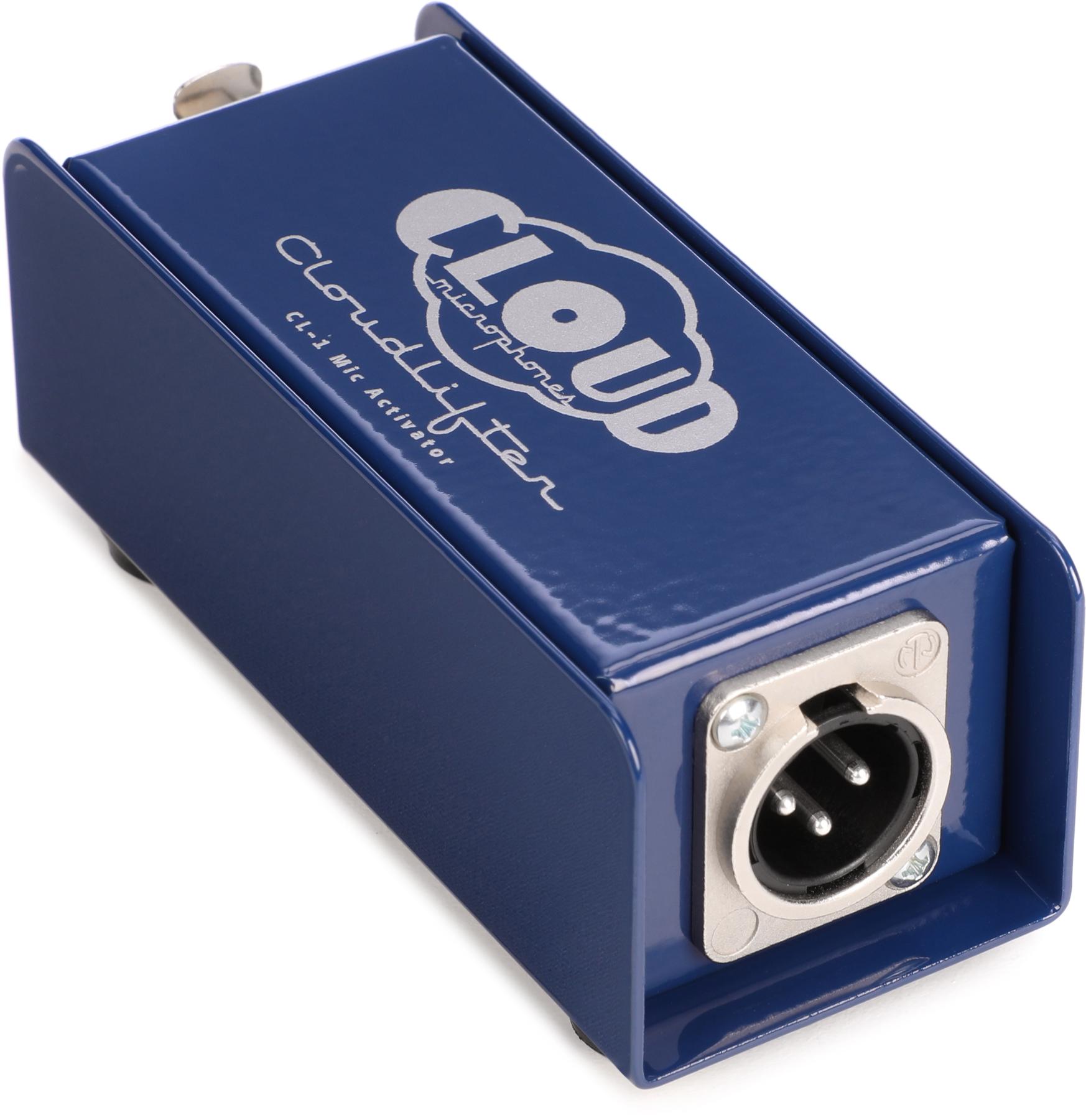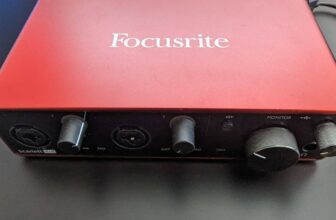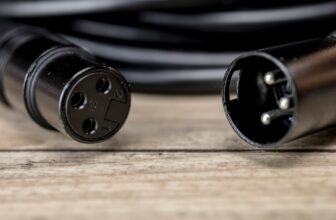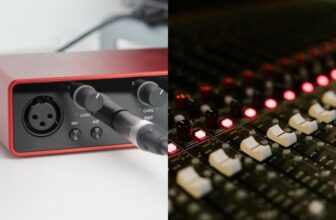Cloudlifter (Is It Worth It, SM7B Mic, Fethead Comparison) (2024)
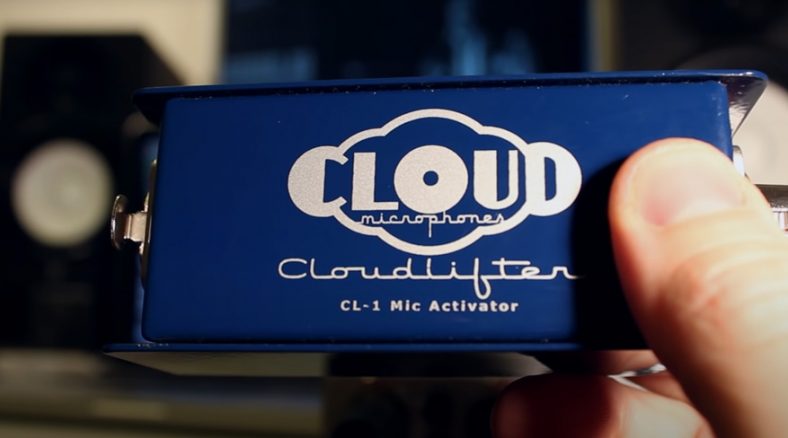
The Cloudlifter CL-1 by Cloud Microphones is an inline mic preamp. Its function is to provide a clean gain boost to your dynamic or ribbon microphone’s signal before it gets to your audio interface or mixer.
Popular dynamic microphones such as the Shure SM7B or the Rode Pod Mic have a very low signal. That means that when using them to record or perform live, you might find yourself really cranking up the gain on your interface to get usable levels.
This can lead to your recordings getting noisier, especially with low-end audio interfaces or inherently noisy preamps. In a live situation, the high gain makes the microphone more sensitive to picking up noise and causing feedback loops.
Contents
The Cloudlifter CL-1 alleviates these issues by providing a clean gain boost before hitting your interface, thus reducing the need to crank up the gain while preserving the microphone’s natural sound.
Nevertheless, do you really need a Cloudlifter at all, and are there any alternatives?
How does the Cloudlifter work?
The functioning principle is simple. The Cloudlifter is positioned in the signal path between your microphone and your preamp (in your audio interface or mixer).
The Cloudlifter takes 48V phantom power from your audio interface and converts this power to a clean gain boost.
Notably, the phantom power is not passed on to the microphone itself. This is especially useful for ribbon mics, which can be damaged by the extra voltage.
The Cloudlifter is thus especially suited to work with passive ribbon microphones, and in fact, was designed for Cloud’s own ribbon mics.
Setting it up
Getting the Cloudlifter up and running is pretty much a ‘plug and play’ task. Simply connect the input of the CL-1 to your audio interface/mixer/preamp and the output to your dynamic or ribbon microphone. Balanced XLR connections are used for both. Turn on phantom power on your interface and you are good to go!
The Cloudlifter has no dials, knobs, or lights. It provides 20-25dB of clean boost, depending upon the impedance of the microphone connected to it. Its own input impedance is about 3kΩ, which is well suited to ribbon microphones in general.
Does the Shure SM7B need Cloudlifter?
The SM7B is a very popular and high-quality microphone for vocals, instruments, podcasting, and more. However, its output levels are quite low at -59dBV. This means that it requires almost 60dB of gain to hit line level at 0dB.
Many interface preamps are designed with the assumption of ‘hot’ condenser microphone outputs and hence cannot provide enough gain to drive a low output microphone like the SM7B.
Even if it can, you might find yourself having to push the gain from the interface to 100%. For entry-level or preamps, this can lead to the signal getting quite noisy because of the gain being cranked so hard.
Similarly, in a live setting, pushing the gain from the mixer raises the noise floor and can make the microphone more prone to feedback and bleed from other instruments or ambient sounds.
In such cases, the Cloudlifter is perfect to pair with the SM7B. Its additional gain means that your preamp can now easily drive it without having to push its gain nearly as much. The Cloudlifter can thus help you get cleaner recordings and ease the aforementioned issues on stage.
This is not to say that it is essential for using the SM7B. If you have high-quality preamps that can pump a lot of gain without getting noisy, you might not need the Cloudlifter’s assistance. On the other hand, maybe you do not mind recording with a cranked interface because you’ve got a noise reduction plugin that can get rid of the additional noise in the post.
Either way, if you can spare the money, the Cloudlifter can be very useful in a pinch, and generally just a great tool to carry around given its portable ruggedness.
Does the Rode PodMic need Cloudlifter?
Similar to the SM7B, the Rode PodMic is also designed to have quite a low output level. Since it’s aimed at podcasters and other speech-level applications, its users presumably won’t present it with the very loud source material.
Additionally, someone buying it for podcasting purposes might not necessarily own a high-end audio interface geared towards studio-quality music production. The combination of these factors means that a user may find that they’re not getting high enough levels out of this microphone.
In such cases, a Cloudlifter can be a great tool to bring the mic up to comfortable levels without having to push the gain of the interface into noisy territory or having to shout into the mic. As with the SM7B, its necessity depends on the particular use case.
If you’re a podcaster or interviewer looking for a portable rig to carry around while traveling, it might be useful to have a couple of Cloudlifters handy to ensure you get clean levels anywhere.
Cloudlifter CL-1 vs. Fethead (Tritonaudio)
The Cloudlifter is certainly one of the most popular inline preamps on the market, but it’s not the only one of its kind.
Tritonaudio’s Fethead is another well-known alternative to give your microphone some extra juice.
So which one should you get? We look at some key differences to help you decide.
Gain amount
When on the topic of Fethead vs Cloudlifter, the Fethead claims to provide 27dB of max gain compared to the 25dB with the Cloudlifter.
Design
The Cloudlifter is housed in a discreet metal box separate from your mic and interface. The construction is rugged and roadworthy, but you will require an additional XLR cable to connect from the mic to the Cloudlifter.
The Fethead on the other hand, plugs in directly to the microphone, with its output going to the interface/mixer with an XLR cable.
Its overall footprint is, therefore, smaller and lighter, but it could be a little more flimsy atop a mic stand than the Cloudlifter. A plus, however, is that you don’t need any additional cables to make it work.
Price
The Fethead is generally more affordable than the Cloudlifter CL-1, but be sure to check the latest prices to be sure.
In the end, both products provide high-quality clean gain to use with your passive ribbon or dynamic microphones.
Choose the one that fits your budget, requirements, and design preference. You can’t really go wrong with either!
Can I use Cloudlifter with a ribbon microphone?
Cloudlifter is specifically designed to keep passive ribbon microphones in mind, with Cloud Microphone’s ribbon microphone as a reference.
Cloudlifter doesn’t let the 48V phantom power reach the ribbon microphone at all, thus preventing any damage. Its impedance of 3kΩ is also perfectly suited for use with passive ribbon mics.
Can I use Cloudlifter with a condenser microphone?
Cloudlifters are not designed to be used with condenser microphones. Condenser mics require phantom power to work. Since the Cloudlifter doesn’t let the phantom power provided to it pass through to the microphone, a condenser microphone will not work with it.
Typically, condenser microphones run much ‘hotter’ than dynamic or ribbon mics, i.e. their output signal levels are far more.
As they are more sensitive and require less gain, you will generally not need an inline mic preamp or activator like the Cloudlifter to use a condenser mic.
Other honorable mentions to the Cloudlifter?
As previously stated, Fethead is by far the most compared option to the Cloudlifter, however, a few others stand out and make their presence known.
The Dynamite DM-1 is also an active inline preamp but with a direct-to-mic connection. With 28dB under its belt, it’s an alternative definitely worth checking out.
Another alternative is the Radial McBoost which is probably one of the best to go neck-and-neck with the Cloudlifter regarding specs. It has almost the same specifications as the Cloudlifter.
There are a few others that might qualify but are still worth mentioning at least. You have Cathedral Pipes Durham MKII, Royer dBooster, MartiAudio Booster, Sanken HAD‑48.
Summary
The Cloudlifer CL-1 is a great tool to keep around in the studio or add to your touring rig. It is solidly built, super portable, and does everything it claims to do.
Furthermore, it can help eliminate a few variables in your recording or live setups like noisy preamps, low output mics, or low signal due to long cables.
It can greatly improve recording with low-end equipment, or breathe new life and energy into higher-end gear.

